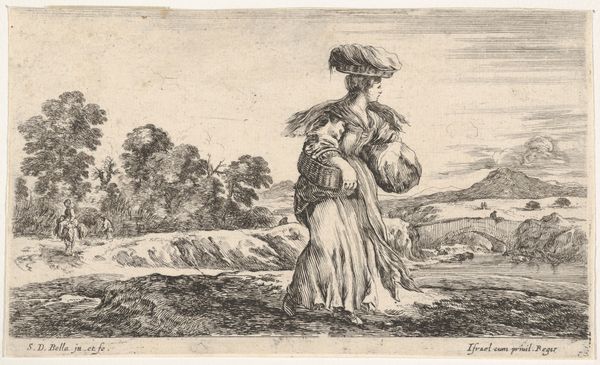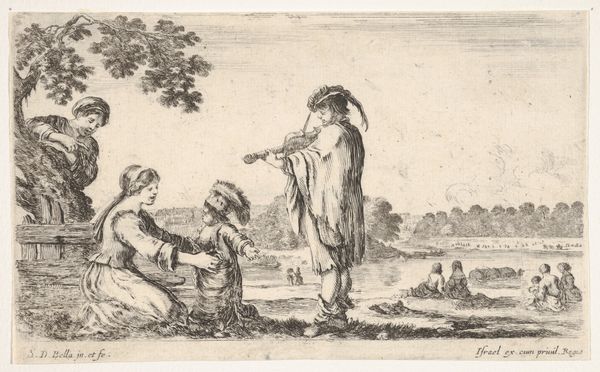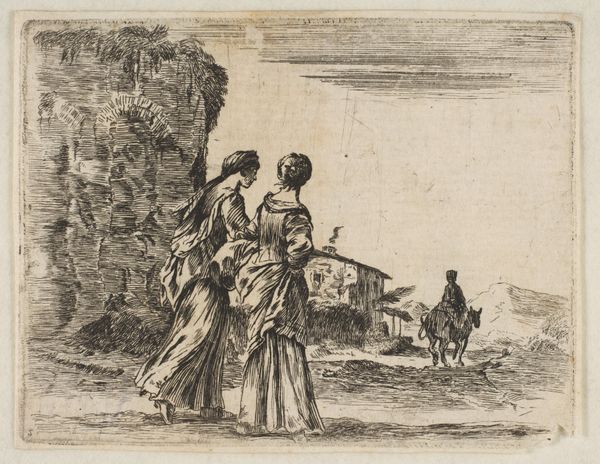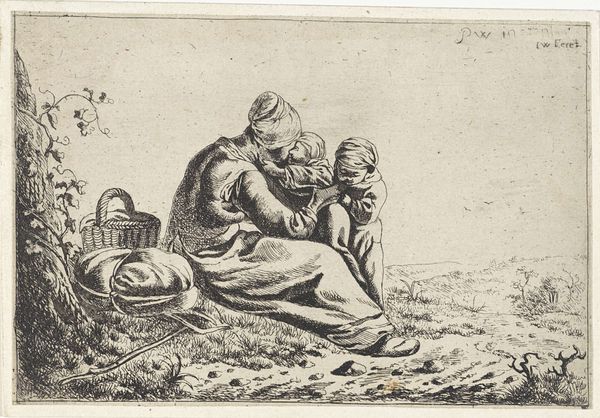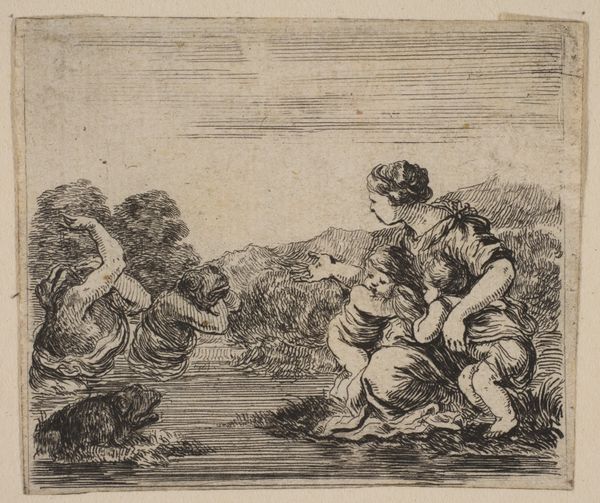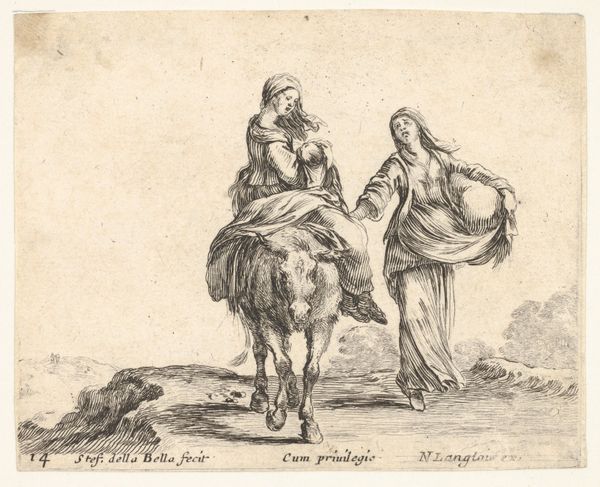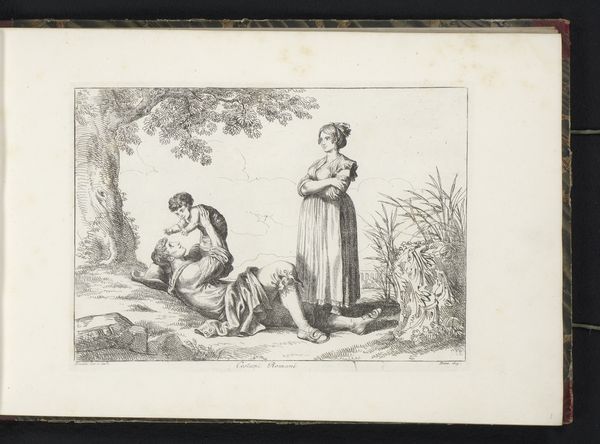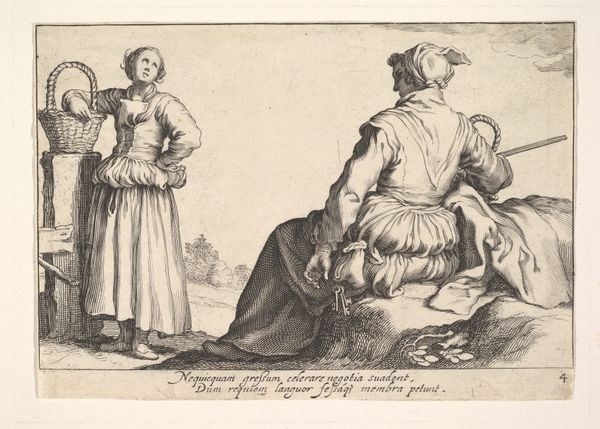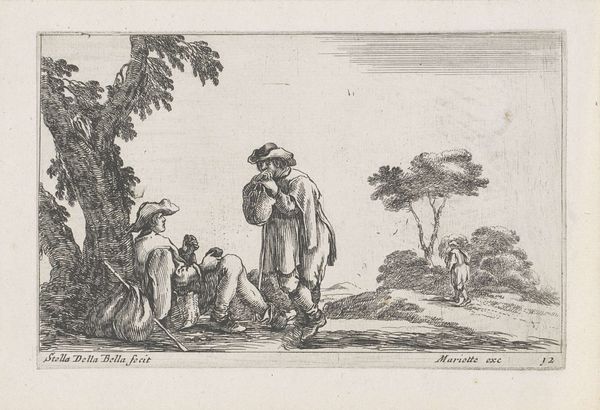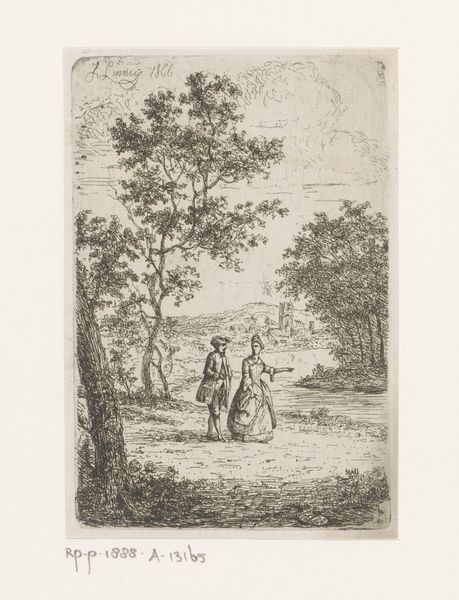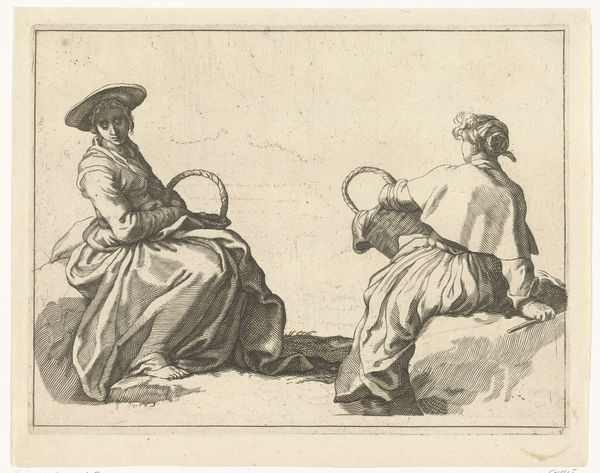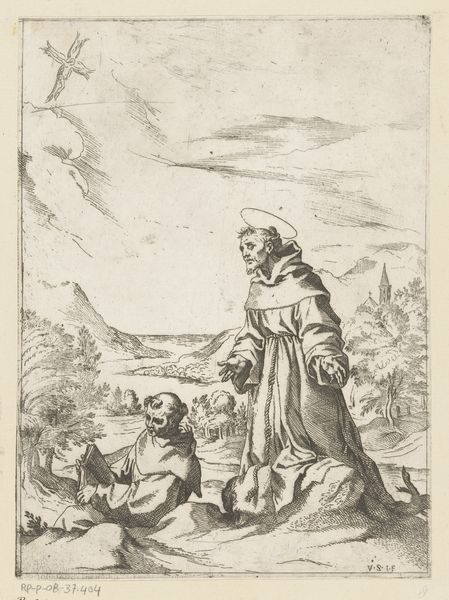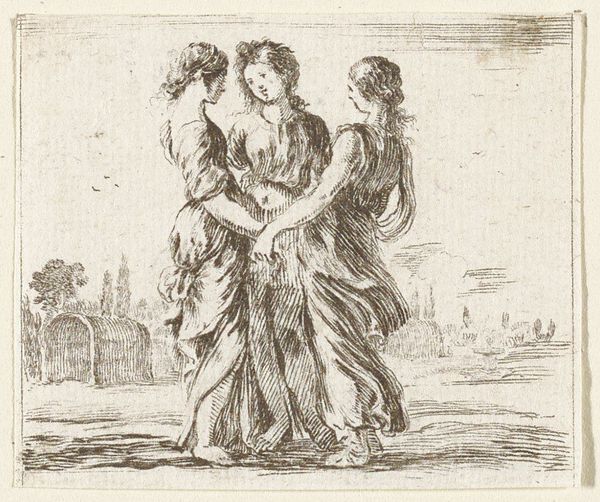
A woman seated to left holding a child, facing right in profile, conversing with a standing woman in center, carrying one child on her back and another in her arms, a church to left in background and boats to right in background, from 'Various figures and lands' (Diverse figure e paesi) 1649
0:00
0:00
drawing, print, etching, engraving
#
drawing
#
ink drawing
#
baroque
# print
#
etching
#
landscape
#
figuration
#
genre-painting
#
engraving
Dimensions: Sheet: 3 9/16 x 6 1/8 in. (9.1 x 15.5 cm)
Copyright: Public Domain
Editor: Here we have Stefano della Bella's 1649 etching, "A woman seated to left holding a child, facing right in profile, conversing with a standing woman in center, carrying one child on her back and another in her arms." The delicate lines create a scene of everyday life, but the figures look quite burdened. How would you interpret this piece? Curator: Well, looking at this etching through a historical lens, the figures reflect broader social realities of the time. The artwork appears following the end of the Thirty Years’ War. These genre scenes gained popularity and served to make commentaries on everyday life in that context. Editor: That makes sense, there's definitely a weariness present. Is that related to the print’s reception? Curator: Exactly. Della Bella made a number of prints commenting on such social issues, shaping public opinion of his subjects through visual media. Note the bare feet of the standing woman, suggesting poverty, juxtaposed with the church and the figures disembarking the boat. Where do you think Della Bella is guiding us? Editor: It's interesting how the composition leads the eye from poverty to possible prosperity and institutional stability. It speaks volumes about social stratification. It almost looks as if the seated woman on the left is questioning why they are in the state that they are in. Curator: Precisely! Consider too the role prints like these played. They were relatively accessible and could circulate widely, informing opinions about wealth distribution during this post-war period. That’s how art actively shaped and mirrored societal attitudes. Editor: I hadn't thought about it that way, that prints at this time acted as a kind of political statement. Thank you! Curator: My pleasure. I’ve certainly learned something as well. It's a potent reminder of how art reflects and influences the course of social history.
Comments
No comments
Be the first to comment and join the conversation on the ultimate creative platform.
